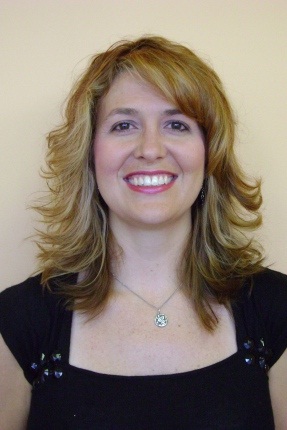By Monica Allison, OD, FOAA
Providing InfantSEE services is a great way to bring a whole family into your practice. When you provide good care early in life, the referrals can be exponential and long-lasting.
InfantSEE, in which ODs provide a comprehensive eye assessment to infants between six and 12 months of age as a no-cost public service, makes sense as a way to do something positive for your community, but it also makes sense from a business perspective. Many of the new parents who visit your practice as patients do not realize that their infants also need to have their eyes examined. Educating parents about why their babies also need to have their eyes cared for, and providing these services at no cost, draws the whole family into your practice.
Educate Parents:
When to Bring Baby in Before Six Months
The InfantSEE program provides for a well-baby exam for babies six- to 12-months of age. It is important to educate parents of possible signs that there is a problem with their child’s eyes before the age of six months such as the appearance of a white pupil or a crossed eye. Parents who are concerned about a possible problem should bring their child in to see the doctor. That visit would be charged as a reimbursable medical eyecare exam. Once the medical issue has been resolved, the parent should bring the baby back to the office for a free-of-charge well-baby exam as part of the InfantSEE program. –ROB Editors
InfantSEE is Good for Business
The good business part of InfantSEE is that it locks in families to your practice. Mothers are the decision-makers of the family, and once you demonstrate that you care about their baby and his/her future vision needs, you have won a patient for life. The mom will become your patient and bring dad and all other family members, as well. In the future, for instance, when one parent comes in for their annual exam, they may also decide it’s a great time to get the kids’ eyes checked, too, and purchase any products the doctor prescribes including eyewear and contact lenses. As the family grows up, you have the opportunity to add many profitable patients to your practice–simply because you did the right thing and offered complimentary vision care when the children were infants.
Not Much Chair Time Needed
The age range for eligible babies in the InfantSEE program are six to 12 months because babies typically don’t have good eye control before six months. A complete InfantSEE exam takes about 15 minutes of time, 10 minutes initially and then five more to complete the wet retinoscopy and dilated exam. You should be able to complete an InfantSEE exam with the regular optometry instruments you already have on hand: prisms, cover paddles, lights, BIO, direct ophthalmoscope, retinoscope–maybe buying a finger puppet or two would be your only investment. We typically prefer to schedule InfantSEE patients for morning appointments on our non-busy days.
Examining a Fussy Baby: Make it Easier
Ask the mother to hold and pat the baby’s back while you examine the baby’s eyes.
Have the mother feed the baby while you do the examination.
Turn off all the lights in the exam room so the light you use to conduct your examination is the only light in the room, thereby drawing the attention of the restless baby. –ROB Editors
Success Stories that Breed Loyal Families of Patients
I discovered a retinal detachment in an infant and referred the baby for surgery. We won’t know total visual outcome until she becomes older, but at least the eye was saved. Another baby who visited our practice appeared very developmentally delayed and did not respond appropriately to his adoptive parents. He never smiled and did not respond at all when people walked into the room. Because of his history of being addicted at birth, we didn’t know how much was visual and how much was because of his history. After discovering a very high prescription and getting the baby eyeglasses, he has opened up and he immediately started crawling and he responds with a smile when his adoptive parents enter the room. We have followed him for over a year now and he is progressing more in line with babies his age.
A Way to Bring in New Families, Too
The number of babies with parents who are current patients versus those with parents who also are new to our practice is about 50/50 because we promote the program whenever we see a patient with an infant or a patient that is pregnant. The other half is from moms-to-be that found us online, or at their pediatrician’s office as a participator in the program. We have given brochures with an introductory letter to local pediatricians and we follow up when we see babies with the pediatrician so they know what services we provide.
Educate Parents
We explain that there is a need to have an eye exam to check for anything that could delay proper visual development. We let the moms know that some things can be treated early if discovered, and this gives the baby the best chance for good sight for a lifetime if we go ahead and make sure they have a clear bill of eye health–much like the routine pediatrician visits they take the babies to. I give some examples of amblyopia and what can cause it and even discuss some health issues that we look for and we encourage the moms to schedule their baby’s exam.
Demonstrate Role of ODs Play in Community
Ultimately, we have found InfantSEE to be a practice builder for us and it is a great patient awareness tool to show that optometrists provide eye health evaluations, not just eyeglasses and contact lenses. The moms appreciate the exam and learn from it. Many times they have other children and never knew that an eye exam was something they should be doing for them, as well.
We get to educate parents that the school nurse and pediatric screenings don’t catch everything and we are here to reassure good health or address anything abnormal we find. It is a feel-good opportunity for all involved. Mom will also often bring Dad to see us and refer us to her circle of other moms. It’s a great word- of-mouth tool. Infants are no different than any other exam that you would gather mostly objective data on. It isn’t a hard exam–it’s super quick in fact. Just do it; you’ll reap the rewards in pediatric eye health, new patients and raised awareness in the community that your practice is there to help.
Related ROB Articles
Improve Communication in a Pediatric Eye Exam
Pediatric Lenses: Encourage Patients to Buy Best Possible Lenses for Children
Pediatric Frames: Balance Child and Parental Preferences
Monica Allison, OD, FOAA, is owner of Stone Oak Vision Source, with two offices in San Antonio, Texas. To contact her: drmonicaallison@yahoo.com

























